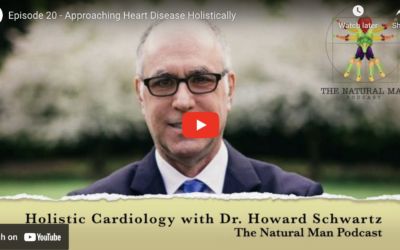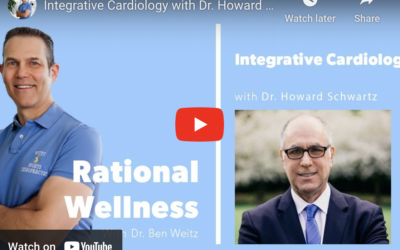The key to achieving optimal wellness and disease prevention lies in our lifestyle behavior choices. It is critical to choose health promoting behaviors over those that lead to disease, dysfunction and suffering.
Most doctors today would agree that wellness – a condition of physical, mental, and
social well-being – will lessen the factors that increase the risk of disease.
The challenge, of course, is that most of us aren’t living in a complete state of wellness,
which means that we’re also facing the prospect of something very difficult: CHANGE.
It’s hard to change our behaviors – how we eat, how we respond to stress, how to kick
bad habits. In part, this is because our brains, probably as a survival adaptation, are
programmed to prefer certainty. In this sense, ego drives us to cling to stability, which of
course conflicts with the reality that everything is always changing. And since change is
inevitable, it becomes clear that a foundation to behavioral change must include
acceptance of the truth that behavior can and will change: Yes, you can do this!
But it’s going to take some strength and courage to override the natural impulse to resist
change.
I recall a time when I was once frustrated with my work as a cardiologist. I would
regularly counsel my patients with tips on transforming lifestyle behaviors, but I would
invariably see that most people, even those who had suffered strokes and heart attacks,
found it hard to change. I would say this was more a problem with “dis-ease” rather than
disease: many of my patients continued to struggle with bad habits. Some people, for
example, would eat poorly to assuage stresses from work, family or other factors. Such
“dis-ease” kept them on a carousel going nowhere – they were relying on surgeries and
medicines to survive. The idea of lifestyle transformation was like a dream: we’d discuss
it, perhaps even consider it for a matter of hours or days, but they didn’t truly know how
to achieve lasting change.
As a cardiologist, it was easy to see, patient after patient, that cardiovascular disease
was in large part, a behavioral disease. Smoking causes breathing problems. Abuse of alcohol damages the liver and other organs. An unhealthy diet clogs arteries and
disrupts the development of normal gut health. Not enough exercise leads to weight
gain, poor sleeping habits, and a host of other issues.
A further threat to our cardiovascular health is stress. Not only is stress itself unhealthy,
but it triggers many people to partake in toxic behaviors as coping mechanisms. Stress
causes hormonal and other biological changes in the body, most notably inflammation,
and has direct adverse effects on health and wellness.
Since the path to wellness is a journey, it would be useful, as a first step, to try to keep
the end of this journey in mind: what is your wellness vision, who is your ideal self, and
what does that picture of yourself look like?
We’ve become acclimated to a cultural exhortation to “just do it,” but this isn’t so simple.
Yes, there comes a time to just do it, but you’ll have to cultivate several steps to get
there. If you can do this – and, yes, you can – then you’ll avoid frustration, develop
confidence in your plan before taking action, and optimize the likelihood of long-term
success.
There are five key stages to health promoting sustained change.
The first is pre-contemplation. This is where you don’t really intend to change quite yet
but when you might suspect you need to do something. In this stage, you’re generally
uncooperative, resistant, or unmotivated, but you’re also starting to sense some
recurring thoughts, an intuitive source of intelligence in your mind or body that some
action or change is being called for. These thoughts or signals will come and go, but,
after a sufficient passage of time, you start to pay more attention.
These intuitive messages lead to the second stage of change, which is known as
contemplation. During this stage, you’re choosing to pay attention to your internal, or
intuitive, messaging. You purposely set aside time to focus on the signals you first
experienced during the pre-contemplation stage, and you find yourself on a mission now
to problem-solve. This is where you become more excited and aware of the benefits of
changing – a sure sign of progress over the pre-contemplation level. At the same time,
usually the drawbacks or obstacles to change start to become evident, which can cause
a loss of confidence. This lingering doubt and delay will keep you from moving forward
toward wellness.
The third stage of change is preparation. This is where you’re generally ready to do
something – perhaps within the next month. You become motivated about freeing
yourself from a major threat to your health. Still, you may also remain fearful – the dread
of failing in this big endeavor also hangs over your head. You start to research the
problem you’ve been sensing, you gather information, and you seek to see what you
haven’t seen earlier – you identify your blind spots. You seek input from people whose
knowledge, experience and judgment you trust.
And then, when you’re ready, you enter the fourth stage – action – the actual change
that removes a previously high-risk behavior: it’s when you’ve stopped smoking or
drinking, for example, or eating foods that make you sick. But this action stage must be
sustained over a long period to be considered lasting. In fact, each of us contemplating
wellness changes must be prepared for at least six months of concerted action.
The fifth and final stage in your change journey is that of maintenance – you strive to
keep the results of your actions in good condition. Maintain your body at least as
diligently as you maintain your car!
Sustained change in this final stage ought to extend over a period of five years – that’s
how long it takes the brain to recognize the new behavioral pattern as normal. After all,
the ultimate goal of wellness is based on establishing a foundation from which you can
enjoy continued and sustained health over years.
Of course, in life we don’t only respond to threats. Elements that account for happiness
include physical, emotional, financial, and social well-being, along with living with a
purpose. Still, what constitutes the most effective change is to remove the threats to
wellness while filling more of your life with what matters to you most.
For further motivation and detailed information about these five stages of change, I
highly recommend the book “Changing To Thrive: Using the Stages of Change to
Overcome the Top Threats to Your Health and Happiness,” by James Prochaska.



